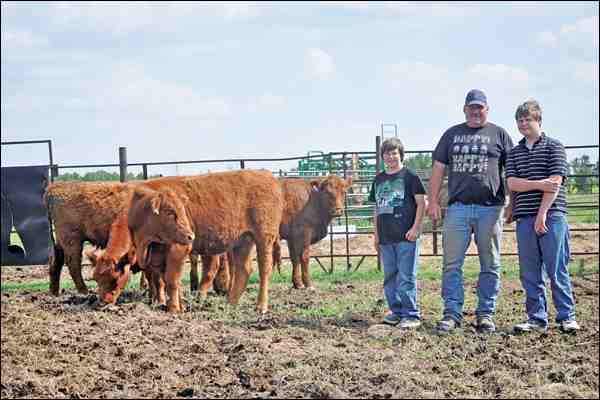A Northwest producer has turned to a Scottish breed so that his two sons can learn the cattle producing business.
Grant Weir, whose pasture is just northeast of the Battlefords, has bought a herd of Luing cattle (pronounced "Ling") for his sons Jack, 13, and Thomas, 11.
They will be in charge of raising the five purebred Luing heifers. According to Weir, their pasture is the first purebred one in Saskatchewan with the Luing breed.
They join a pasture that includes several other commercial cattle.
The heifers are the beginning of the herd; both his boys will be in charge of raising the cattle and they should each have at least 20 cattle by 2016, said Weir.
The Luing, a moderately-sized breed with a distinctive reddish-brown colour, originated in the highlands of Scotland on the island of Luing.
According to information the Weirs provided, the breed has a reputation for "hardiness" and "calm temperament." The cattle from that part of Scotland have an extremely good reputation for quality as well, they said.
"Apparently the Queen only eats Highland beef," said Weir. "That's what I've been told."
They had been considering acquiring Luing for about a year, but "they are just so hard to get." They considered obtaining them direct from Scotland, but that would have cost at least twice as much as purchasing them from Alberta.
"We had a line on some from Scotland but it just seemed so expensive," said Weir.
They finally were able to purchase the Luing from a producer in Rimbey. "We had our name on the list," said Weir, who noted there was a big demand for that product in Calgary restaurants.
They cite several advantages to the Luing breed. The Luing are grass-fed, which the Weirs say promotes several health benefits.
According to son Jack, they will have the "same amount of Omega-3s as fish."
The product is also high in "conjugated linoleic acid," which is highly regarded for its cancer-prevention qualities. Thomas pointed to statistics they found on the Internet that there was "a 60 per cent less risk of breast cancer with grass-fed cows".
"It's good quality meat," said Jack, that can be made "just as quickly as an average cow's."
On the other hand, the Weirs were less than impressed with the idea of finishing cattle in feedlots.
He pointed to feedlots giving the cattle 90 per cent grain; as well, the Weirs also do not like the idea of the meat being subject to growth hormones or chemicals.
"As soon as they come into the feedlots they give them all penicillin and stuff," Weir said, adding they get them "whether they need them or not."
While other cattle is finished on grain, Luing cattle is "finished off without grain," said Weir.
Moreover, the Weirs preferred a situation where the cattle could be raised and finished on a grass diet. "This is a cattle's natural habitat," said Weir.
The end result, they believe, is a "healthy" product.
"It's always better if you could come out and you know where your meat has come from and what it's gone through," Weir noted.
Already there is a lot of interest in the cattle in the Battlefords area, and Weir says the finished product will ultimately be sold locally.
Weir muses that once they have a finished product by June of 2016 they will "have a big barbecue and invite the whole town, (and) let them check it out."



